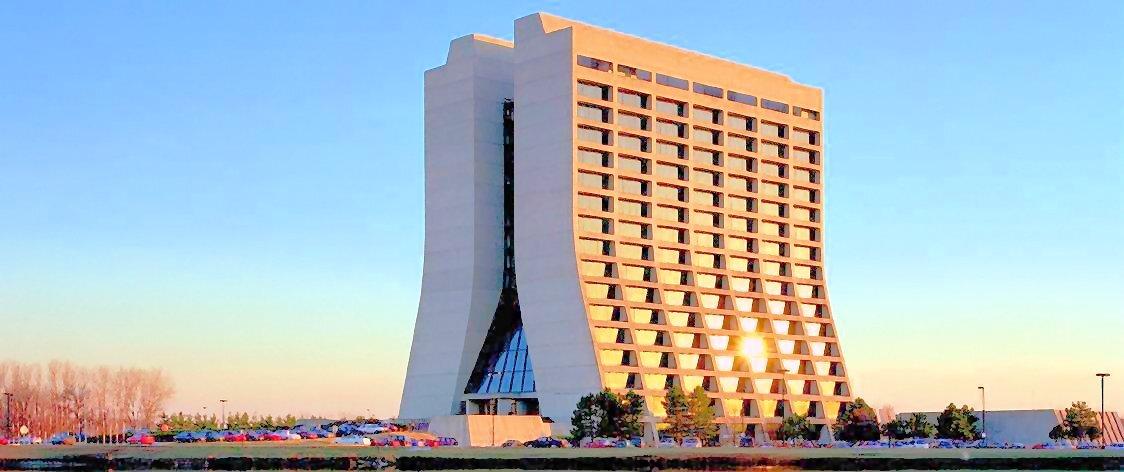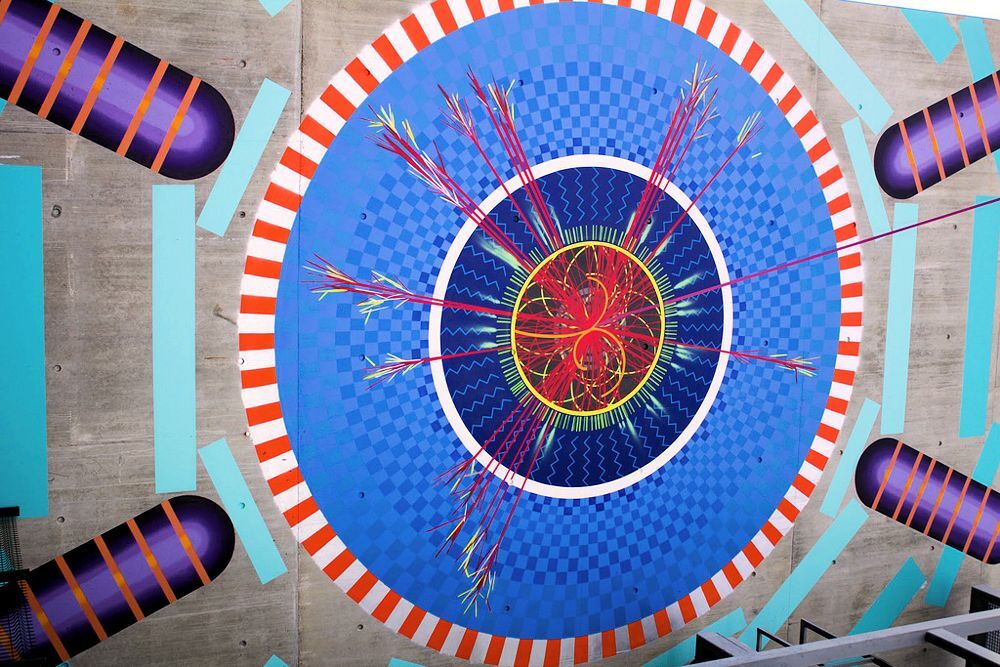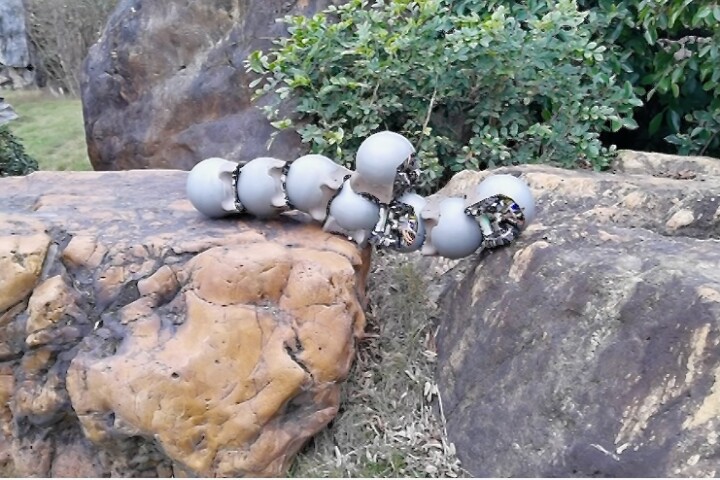"Science, like art, is not a copy of nature but a re-creation of her." – Jacob Bronowski
The largest single piece of experimental scientific apparatus is currently the Large Hadron Collider bridging the border of France and Switzerland. The control building of the ATLAS detector, one of two general purpose particle detectors built with the LHC, has found itself adorned with a magnificently bright mural. The story of how the mural came about provides a fascinating glimpse at the crossroads of art and science.Both science and art purport to offer humanity new ways to see and to understand. It is perhaps then not surprising that many artists are fascinated by science, and many scientists are practicing artists. Buildings designed for (and often by) scientists to house their laboratories, offices, and meeting rooms can be masterworks of architecture.

Among the better known of such buildings are Fermilab's Wilson Hall outside Batavia, Illinois, and the Salk Institute for Biological Studies in La Jolla, California.
It has become commonplace for major scientific institutes to have an internal artist's residency program. These range in formality from ad hoc collaborations to such programs as Swiss-artists-in-labs, and the Santa Fe Institute's NM-SARC collaborations. Such programs have attracted some of today's finest artists, sculptors, and musicians to participate in the creative process.

CERN, the European Organization for Nuclear Research, has a particularly active resident artists program. At present they have programs in the digital arts, in film, and in dance and performance, which offer three months of funded residency at CERN as well as prize money to assist in funding projects. CERN's goal is steady and continuing exploration of the art-science crossovers. “Together science and the arts form culture – our expression of what it is to be human in our universe," says Director-General of CERN, Rolf Heuer.
Oddly, despite this strong bent toward inclusion of the creative arts, this is not how the ATLAS mural came about. That is mostly the story of the young painter and muralist Josef Kristofoletti of Austin, Texas, who was 28 when he painted the CERN ATLAS mural.
A product of the Art Institute of Chicago and Boston University, and a lifelong fan of science, he worked in Italy for a period, and was inspired by the magnificent Renaissance murals he saw there. “The subject of most of those works is religious mythology.” he said afterwards. “When I think about the LHC it always seems like an unprecedented cathedral of science. I thought this would be a modern-day version of a Renaissance mural.”
Kristofoletti relates how a dream propelled him toward creating a mural of the ATLAS particle detector in an interview with Fermilab's Symmetry newsletter. “I remember having a dream about being inside the detector as the collisions were happening,” he said. “Everything was brightly colored and geometric, like a multifaceted crystal.”

Redux Contemporary Art Centre in Charleston, South Carolina was hosting a showing titled The Sun Machine is Coming Down, focused on the paintings of Matt Phillips and a new mural to be painted on the Centre's external walls by Kristofoletti. He took the opportunity to sell his creative concept for the ATLAS, and produced a mural for the showing that was about one-fifth scale, only 5 x 9 m (16 x 30 ft) in size.
Kristofoletti took the opportunity to invite the Chairman of the Physics Department of a local university to give a lecture at the exhibit opening on the Large Hadron Collider and what it was built to accomplish. This seems to be the step that eventually caught the attention of Claudia Marcelloni, now CERN's Communications Officer for the ATLAS project. Having just recently completed work on the ATLAS photo book Exploring the Mystery of Matter, she was interested in commissioning Kristofoletti to create some art for CERN, and invited him to Geneva to discuss the possible project.
After spending about a year on details such as where the mural was to go (Kristofoletti insisted on painting the external walls of the ATLAS detector control room, on the surface directly above the actual detector, which resides 100 m, or 330 ft, below ground), and solving a host of formal training and security issues, he set to work. By himself. The process of bringing assistants into the CERN facilities and the safety training involved was prohibitively expensive. In the end, CERN provided the walls, the paints, and a very long cherry picker, while an anonymous donor picked up his travel and living expenses.
Progress was interrupted by the winter weather of Geneva, but proceeded apace the next summer, and the mural was officially unveiled in October. Towering some four stories in height, the mural is only about one-third the size of the 7,000-ton detector.

The mural includes more science than might have been expected. The collision being shown on the side view of the detector is one of those expected to result from the decay of a Higgs boson, while the design on the end view (above) is what the scientists expect to see if they ever catch the decay of a mini black hole.
We'll give the artist the last word. the last word: “There is something about the CERN project: the birth of the Internet, the international teamwork, the scale and energy of building something huge to get at something so small that it is invisible – this deeply resonates with me and seems like a good subject for contemporary art.”
You can see a video about Kristofoletti's work at CERN below.
Further reading: Josef Kristofoletti, CERN



















